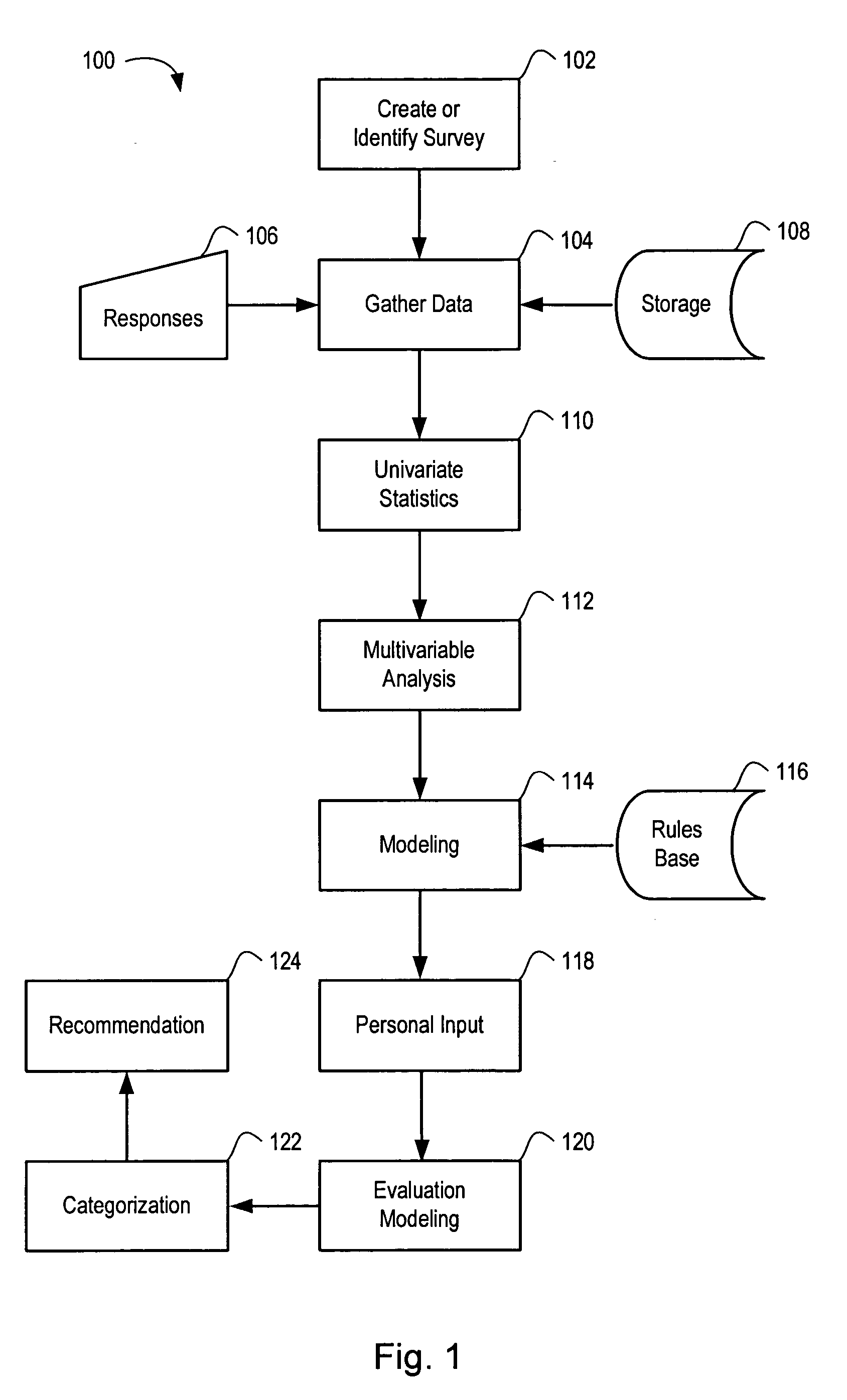Systems and methods for risk stratification of patient populations
- Summary
- Abstract
- Description
- Claims
- Application Information
AI Technical Summary
Benefits of technology
Problems solved by technology
Method used
Image
Examples
example 1
Survey Data Collection
[0113] Example 1 demonstrates data collection techniques for gathering data that were used as steps 102 and 104 of FIG. 1. In some cases, an expert devised questions to obtain data possibly having some relevancy in assessing prognostic outcomes. In other cases, a well-accepted study may be selected for this purpose.
[0114] A literature search identified the SAQ as a leading survey pertaining to health status of acute coronary syndromes (ACS) or coronary artery disease (CAD). A total of 5,558 Veteran's Administration patients reporting coronary artery disease were administered the SAQ. Patient responses to the SAQ were evaluated by conventional SAQ assessment techniques to provide scores assessing physical limitation characteristics according to traditional risk variables including physical limitation, angina stability, angina frequency, CAD-specific treatment satisfaction and quality of life. The patients were also asked to provide demographic information and ...
example 2
Statistical Processing of Life Survey Data Collection
[0124] The data collected in Example 1 was subjected to statistical processing, e.g., as generally shown in steps 110 and 112 of FIG. 1 to create a model relating the respective adverse outcomes to scores on the SAQ. All analyses were performed using commercially available statistical computer programs, namely, SAS™ Version 6.12 (a trademark of SAS Institute, Inc. of Cary, N.C.) and S-Plus 2000™ for Windows (a trademark of Statistical Sciences, Inc., of Seattle, Wash.). Statistical curves for all cause mortality were calculated using Kaplan-Meier analysis. The data were stratified by quartiles of the initial or baseline SAQ scores. Log-rank tests were used to compare data from the respective groups to establish that patients with lower scores initially died sooner and more frequently than patients reporting higher scores. Predictive models were developed for one year mortality and ACS hospitalization, by logistic regression.
[012...
example 3
Univariate Calculation Results
[0128] The results of statistical calculations in Example 2 were inverted to provide a model for prognostic use. Table 1 provides the baseline characteristics and univariate odds ratios for one-year mortality and hospitalization. The mean SF-36 PCS was 30.8±10.5, indicating that these patients scored almost two standard deviations below the mean United States population in terms of general physical health status. Over the one year of observation, there were 238 deaths (5.3% of the test population) and 154 ACS hospital admissions (3.6% of the test population).
[0129] Table 1 describes the relative odds of death at one year by demographic characteristics, comorbidities, and SAQ scores. The most powerful predictive parameters were age, presence of congestive heart failure, and health status. In Table 1, the “Odds Ratio” for “One-Year Mortality” is calculated as the actual mortality divided by the “Minimal” mortality. The low p-values show that the reporte...
PUM
 Login to View More
Login to View More Abstract
Description
Claims
Application Information
 Login to View More
Login to View More - R&D
- Intellectual Property
- Life Sciences
- Materials
- Tech Scout
- Unparalleled Data Quality
- Higher Quality Content
- 60% Fewer Hallucinations
Browse by: Latest US Patents, China's latest patents, Technical Efficacy Thesaurus, Application Domain, Technology Topic, Popular Technical Reports.
© 2025 PatSnap. All rights reserved.Legal|Privacy policy|Modern Slavery Act Transparency Statement|Sitemap|About US| Contact US: help@patsnap.com



